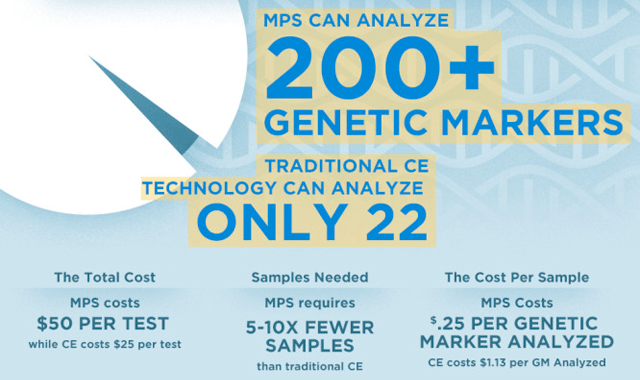The Real Impact of Massively Parallel Sequencing in DNA Forensics

Massively Parallel Sequencing (MPS) is rapidly changing the landscape for DNA analysis.
The new technology empowers investigators to create life-like pictures of suspects or people from DNA samples, whether that DNA is logged in current systems or not. The investigative advantages it gives law enforcement are huge — especially in the areas of solving missing persons, identifying human remains and criminal investigation.
The infographic below outlines the clear human, administrative and financial impact that MPS will have once fully adopted into forensic laboratories.

Beyond investigative advantages, MPS has a real human and financial impact.
It holds the potential to more quickly identify suspects and victims, reduce the emotional burdens experienced by victims and their families while they wait for answers, and reduce the administrative cost incurred by prolonged investigations.
Previously applied only in research environments, a growing number of internationally accredited DNA forensic laboratories are now in the process of validating the technology for forensic typing applications.
However, there is still work to be done to optimize the technologies, workflows and analytical methods for forensic application. What will it take to move MPS into the mainstream? Check out our white paper to discover the roadmap for implementing the technology in forensic labs.
Sign Up for Battelle Updates
Follow along with the latest news, announcements and updates from our Battelle community of solvers.